 AB of the circle into as many equal parts as the polygon is to have sides. With the points A and B as centers and radius AB, describe arcs cutting each other at C. AB of the circle into as many equal parts as the polygon is to have sides. With the points A and B as centers and radius AB, describe arcs cutting each other at C.  Observational Geometry - Page 160by William Taylor Campbell - 1899 - 240 pagesFull view Observational Geometry - Page 160by William Taylor Campbell - 1899 - 240 pagesFull view - About this book
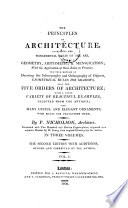 | Peter Nicholson - 1809 - 426 pages
...describe two arcs intersecting each other at F. 2. From B, draw BC perpendicular, and divide the arc AC into as many equal parts as the polygon is to have sides. 3. Through the second division D, draw BG, make FE equal to FD, and through E, draw AG, meeting BG... | |
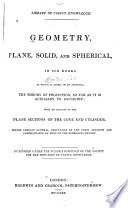 | Pierce Morton - Geometry - 1830 - 584 pages
...circumscribed about the circle, viz. by dividing the circumference (or conceiving it to be divided) into as many equal parts as the polygon is to have sides, and drawing tangents through the points of division. Then, because the area of the polygon is equal... | |
 | Edward Shaw - Architecture - 1832 - 402 pages
...two arcs, intersecting each other at F. 2. From B, draw В С perpendicular, and divide the arc А С into as many equal parts as the polygon is to have sides. 3. Through the second division D, draw BG, make FE equal to FD, and through E, draw AG, meeting BG... | |
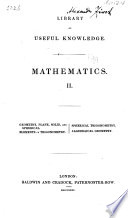 | Mathematics - 1835 - 684 pages
...circumscribed about the circle, viz. bv dividing the circumference (or conceiving it to be divided) into as many equal parts as the polygon is to have sides, and drawing tangents through the points of division. Then, because the area of the polygon is equal... | |
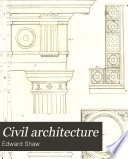 | Edward Shaw - Architecture - 1836 - 438 pages
...two arcs intersecting each other at F. 2. From B, draw В С perpendicular, and divide the arc А С into as many equal parts as the polygon is to have sides. 3. Through the second division D, draw BG, make FE equal to FD, and through E, draw AG, meeting BG... | |
 | Luther Ainsworth - Arithmetic - 1837 - 298 pages
...polygon of any given num. ber of sides ? A. Draw a circle of the diameter of the required polygon, and divide the circumference into as many equal parts as the polygon has sides, and the quotient will show the length of each side, which may be set off and marked accordingly.... | |
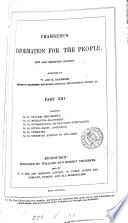 | Chambers W. and R., ltd - 1842 - 744 pages
...circle about equal in size to the required size of the polygon ; then the circumference is divided into as many equal parts as the polygon is to have sides ; all that then remains to complete the figure is to draw straight lines or chords between each two... | |
 | William Pease - Geometry - 1843 - 80 pages
...length on either side as A C. From A as a centre, with AB as a radius, describe a semicircle. Divide it into as many equal parts as the polygon is to have sides (say five.) 3. Draw lines through all the divisions, (minus one,) as AD, A 3 E, A 4 F. 4. From D and... | |
 | Robert Griffith Hatfield - Architecture - 1845 - 326 pages
...acdb will be the square required. Fig- 61. Fig. C2. Fig. 63. AMERICAN HOUSE-CARPENTER. feb ; divide ac into as many equal parts as the polygon is to have sides, and extend those divisions from c towards d ; from the second point of division counting from c towards... | |
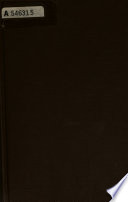 | George Roberts Perkins - Geometry - 1847 - 326 pages
...order to inscribe a regular polygon of a certain number of sides, in a given circle, we must be able to divide the circumference into as many equal parts as the polygon is to have sides ; and then, by joining these successive points of division, we shall form the polygon desired. For... | |
| |